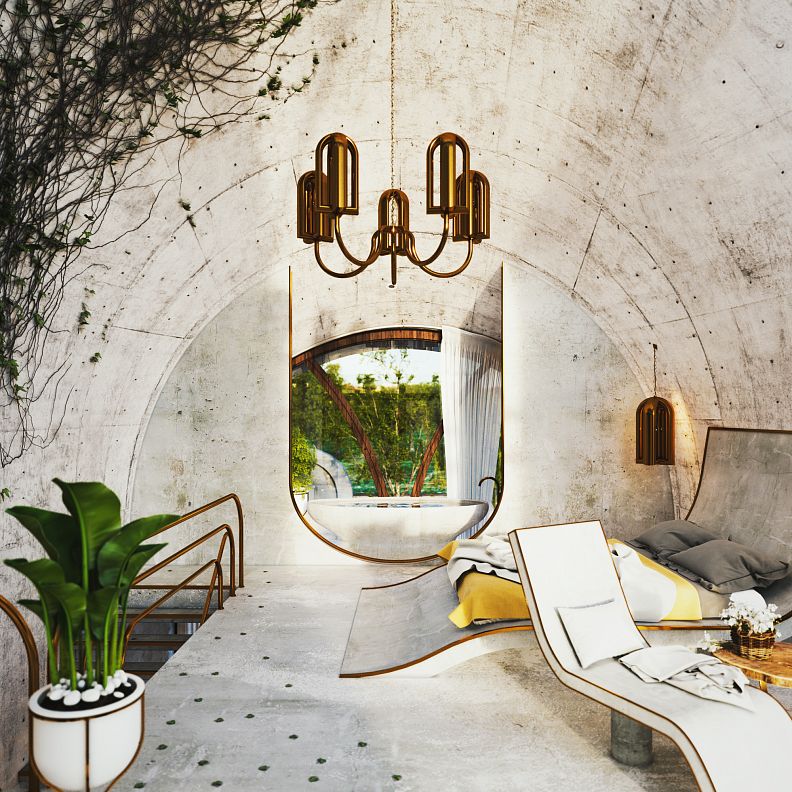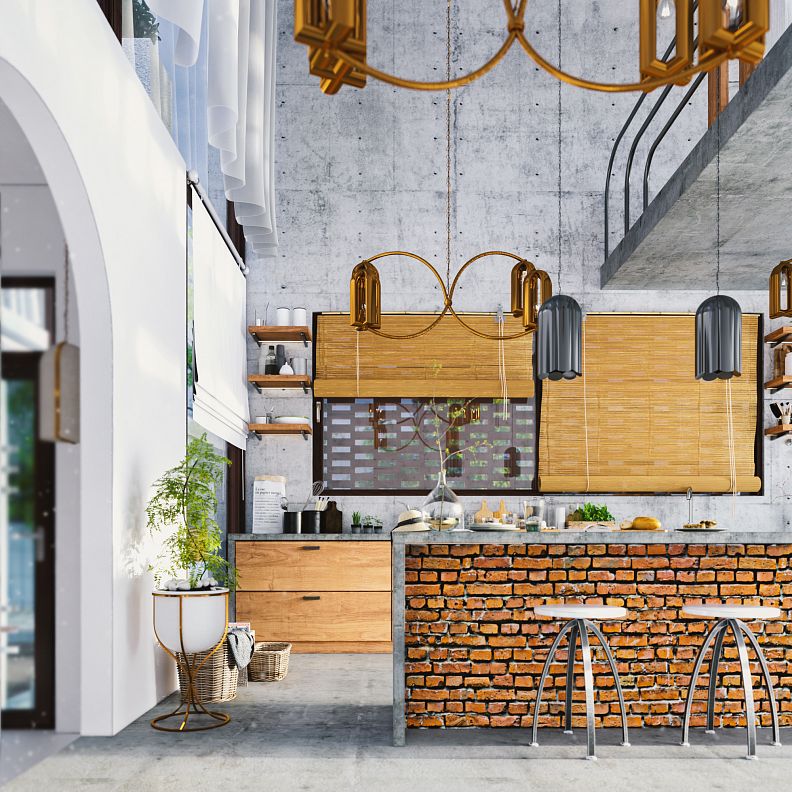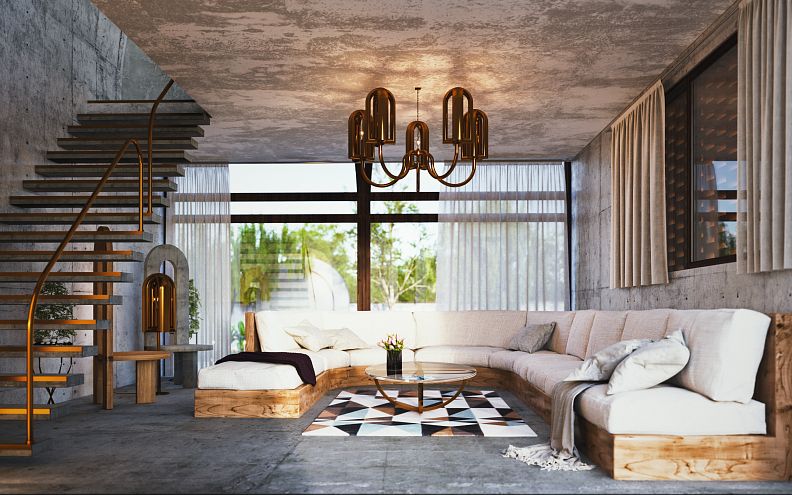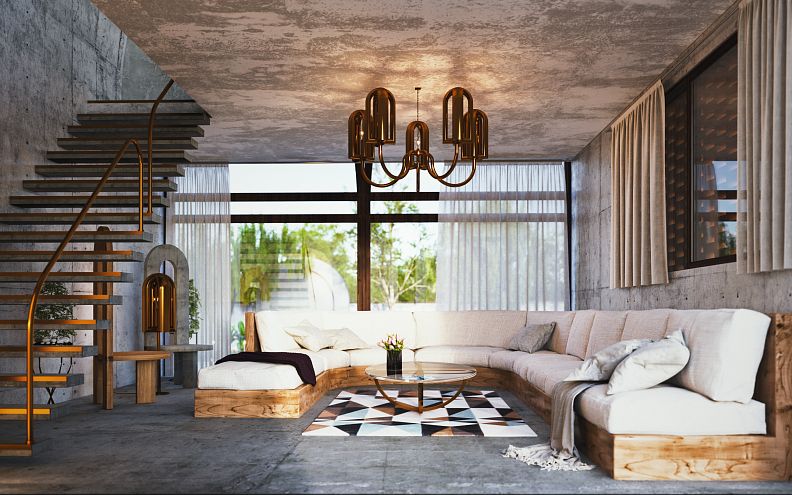arc house

Project idea
The villa project is for the Iranian family. This family lives in Iran for 6 months of the year and the next 2 months, ie spring and summer.
Since he was an Iranian client
To maintain a sense of Iranian architecture for this family, we used Iranian architecture patterns in the design of this project.
We used arches in the design, which shows its effect on our design.
Due to the traditional houses in Germany, where the roofs of the houses are sloping due to heavy rainfall, we designed the roof to be sloping.
Due to the importance of the number 4 in Iranian architecture, we used the design pattern in 4 sections so that we could see all the main directions of the site except the western side (because of the western light) and we used the western side with Fakhrmddin brick to move forward to take the western light and just bring the light of this light into the space.
In designing the garden, we used the pattern of the Iranian garden in it, and in the four main directions of the site, we used 2 patterns of the Zoroastrian religion that were in Iran (water, wind, earth, fire).
In the walls on the west side of the garden, which are connected to the outside, we used Fakhrmddin to remind the garden of Iranian architectural gardens during the Safavid period.
The 4 pattern of design of the villa is interconnected by an intermediary element as a corridor, which in this space looks to the 4 main patterns that we used on the site.
Among the villa's patterns, we used a tree to embrace nature's architecture in addition to creating a sense of vitality.
In this project, we suggested to the client that we design the interior furniture according to the original design pattern, and the employer accepted this offer. Therefore, we designed the main furniture of this project such as chairs, beds, sofas, chandeliers, TV table, bathtub and vase according to the original design pattern so that all the elements in the project are in harmony with each other.
Project description
The villa project is for the Iranian family. This family lives in Iran for 6 months of the year and the next 2 months, ie spring and summer.
Since he was an Iranian client
To maintain a sense of Iranian architecture for this family, we used Iranian architecture patterns in the design of this project.
We used arches in the design, which shows its effect on our design.
Due to the traditional houses in Germany, where the roofs of the houses are sloping due to heavy rainfall, we designed the roof to be sloping.
Due to the importance of the number 4 in Iranian architecture, we used the design pattern in 4 sections so that we could see all the main directions of the site except the western side (because of the western light) and we used the western side with Fakhrmddin brick to move forward to take the western light and just bring the light of this light into the space.
In designing the garden, we used the pattern of the Iranian garden in it, and in the four main directions of the site, we used 2 patterns of the Zoroastrian religion that were in Iran (water, wind, earth, fire).
In the walls on the west side of the garden, which are connected to the outside, we used Fakhrmddin to remind the garden of Iranian architectural gardens during the Safavid period.
The 4 pattern of design of the villa is interconnected by an intermediary element as a corridor, which in this space looks to the 4 main patterns that we used on the site.
Among the villa's patterns, we used a tree to embrace nature's architecture in addition to creating a sense of vitality.
In this project, we suggested to the client that we design the interior furniture according to the original design pattern, and the employer accepted this offer. Therefore, we designed the main furniture of this project such as chairs, beds, sofas, chandeliers, TV table, bathtub and vase according to the original design pattern so that all the elements in the project are in harmony with each other.
Technical information
The villa project is for the Iranian family. This family lives in Iran for 6 months of the year and the next 2 months, ie spring and summer.
Since he was an Iranian client
To maintain a sense of Iranian architecture for this family, we used Iranian architecture patterns in the design of this project.
We used arches in the design, which shows its effect on our design.
Due to the traditional houses in Germany, where the roofs of the houses are sloping due to heavy rainfall, we designed the roof to be sloping.
Due to the importance of the number 4 in Iranian architecture, we used the design pattern in 4 sections so that we could see all the main directions of the site except the western side (because of the western light) and we used the western side with Fakhrmddin brick to move forward to take the western light and just bring the light of this light into the space.
In designing the garden, we used the pattern of the Iranian garden in it, and in the four main directions of the site, we used 2 patterns of the Zoroastrian religion that were in Iran (water, wind, earth, fire).
In the walls on the west side of the garden, which are connected to the outside, we used Fakhrmddin to remind the garden of Iranian architectural gardens during the Safavid period.
The 4 pattern of design of the villa is interconnected by an intermediary element as a corridor, which in this space looks to the 4 main patterns that we used on the site.
Among the villa's patterns, we used a tree to embrace nature's architecture in addition to creating a sense of vitality.
In this project, we suggested to the client that we design the interior furniture according to the original design pattern, and the employer accepted this offer. Therefore, we designed the main furniture of this project such as chairs, beds, sofas, chandeliers, TV table, bathtub and vase according to the original design pattern so that all the elements in the project are in harmony with each other.













